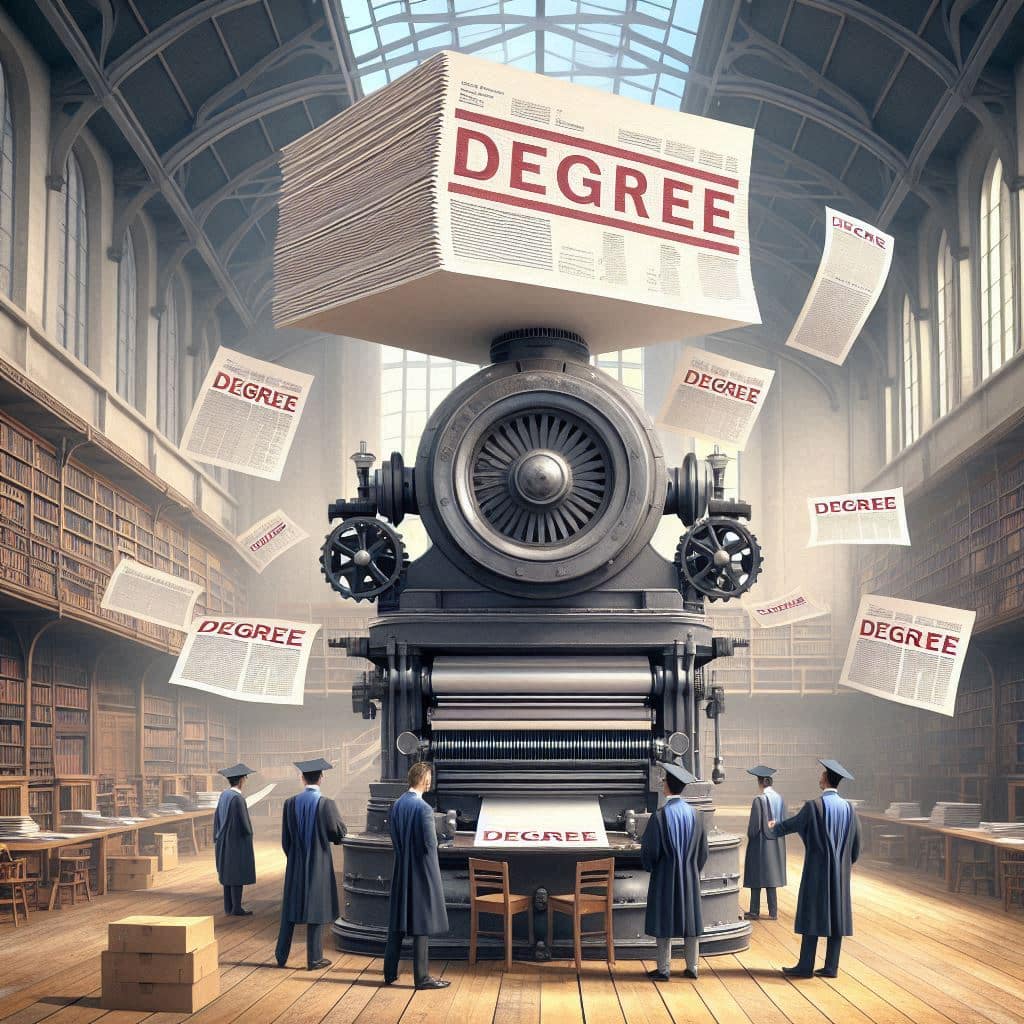The dodgy economics of “Snowpiercer” and “The Platform”: an econ bore’s movie review
SUGGESTED



In recent weeks, however, lockdown-induced binge-watching has overwhelmed my carefully cultivated anti-politics barrier. I never wanted to be that bore who rants about left-wing bias in movies, but I’m afraid it’s too late. This article will do precisely that, by way of two recent examples: the movie The Platform and the series Snowpiercer.
The Platform is about a group of people who are trapped in a tower-like building, scattered in pairs across hundreds of floors. Food supply in the tower works as follows: every day, an army of chefs prepare a luxurious banquet at the top of the tower. They lay it out on a large concrete platform, which is then lowered, like an elevator, and stops on every floor for ten minutes or so. During those minutes, the people on the respective floor can eat as much as they like. Then the platform continues its downward journey.
This results in a grossly unequal distribution of food. The people at the higher levels ridiculously overindulge, while those further down have to scrape for the leftovers.
The movie’s protagonist tries to organise a more equitable system of food distribution, but fails, because of a lack of cross-floor solidarity. People look down upon those below them, and resent those above them. Despite the fact that the allocation of people to floors is completely random, people convince themselves that the order is somehow “just”, or at least, from their own floor downwards. Needless to say, the tower is meant to represent capitalism, and the floors are meant to represent the social classes.
Snowpiercer is set in a post-apocalyptic world, where a new ice age, brought about by an attempt to combat global warming via geoengineering, has wiped out almost all of humanity. The survivors are trapped on a massive train, which runs across the world, and never stops.
The train is a self-contained society. People even grow food in it, and it contains an ample stock of supplies from before the apocalypse. The train-society is extremely stratified. In the front carriages, people live in luxury; in the rear carriages, they live in in squalor.
There are far more poor people than rich people on the train, but the rich are better organised, and the poor lack class consciousness. The lower-middle class, for example, looks down upon the poor, and there is a small degree of social mobility, which gives people false hopes, while also making them compete against each other. You’ve probably guessed that the train is meant to represent capitalism, and that the carriages are meant to represent the social classes.
If you are on board with the current “Millennial Socialism” hype, you will probably now be thinking: “What’s not to like? These sound like perfectly accurate metaphors for capitalism!”
Alas, they are anything but. In the scenarios described in these movies, there is no “economy” as such. There is no or not much production, not much trade, not much exchange, and not much of a division of labour. A certain amount of resources is just somehow “given”, and the only question is how to distribute it.
This is not a great metaphor for capitalism, to say the least. Under such circumstances, there is indeed no good reason why some people should have more than others. But in an economy based on production and voluntary exchange, where some people get rich by offering others something they want, and are prepared to pay for, it would be a very different story.
Also, while using a small group as a microcosm of wider society can be a powerful narrative technique for many purposes, it does not work if you are trying to make a point about economic systems. When it comes to economic systems, scale matters. In a society which only consists of a few dozen or a few hundred people, you don’t need well-defined property rights, and you don’t need markets. Collective ownership, and democratic planning, can work perfectly well. I don’t know yet how Snowpiercer ends; maybe there will be a socialist revolution of sorts, turning the train into a Democratic People’s Train, and all passengers will live happily ever after. And why not? On that scale, even I would not be opposed to socialism. But the point is that that model has never been successfully scaled.
Ironically, by its mere existence, this proliferation of movies, series, novels etc with a quasi-Marxist message itself refutes a major plank of Marxist ideology. Marx famously said that
“The ideas of the ruling class are in every epoch the ruling ideas, i.e. the class which is the ruling material force of society, is at the same time its ruling intellectual force. The class which has the means of material production at its disposal, has control at the same time over the means of mental production”.
If that were so, we should expect plenty of movies that idolise rich entrepreneurs, and depict capitalist relations as mutually beneficial. The fact that we see the exact opposite shows that there is no such thing as a “ruling class”, and that being wealthy does not, in itself, make you culturally influential.
The ruling ideas of our time are not the ideas of an imaginary capitalist “ruling class”. The ruling ideas of our time are simply the ideas that are most fashionable. What a shame that all the fashionable ideas of our time are wrong.
This article was first published on CapX.
—
Suggestions for further reading/watching/listening:
- “Taxpayers’ Talk: Socialism – the failed idea that never dies“; podcast of the Taxpayers’ Union, New Zealand
- “E-Masterclass: Socialism – the failed idea that never dies“; webinar with the Greek think tank Kefim
- “Is there a difference between socialism and communism?“; IEA video
- “Socialism: losing the battle but winning the war?“; IEA vidcast
- “Millennial Socialism: same old, same old“; Economic Affairs, Volume 39, Issue 3
1 thought on “The dodgy economics of “Snowpiercer” and “The Platform”: an econ bore’s movie review”
Comments are closed.





Hello! Am watching the Snowpiercer myself and thus came across your comment. I would like to say that I disagree with two points of your analysis:
1) While you are right that the resource production and distribution system that exists on the train does not reflect the structure and complexity of the globalised or even nation-level capitalist economy, it’s a rather nice reflection of how an individual capitalist enterprise functions, how it produces wealth and distributes wealth between the participants in the enterprise, and how it struggles to survive in a hostile external environment. The tail is a really nice metaphor for a life of a Deliveroo rider who is making less than minimum wage. And the whole train is a nice metaphor for Deliveroo itself that is eking out its existence in the unforgiving capitalist freeze that can turn its investment tap off at any time.
2) You are also wrong in your understanding of “ruling ideas” and how they work. On the most basic level, there are plenty of cultural and educational products that promote the capitalist system. The “rich entrepreneur” may not be idolised explicitly on a regular basis, but the promotion of the capitalist system is accomplished in much less crude ways. Instead, we have notions of “self-made men” (Saint Steve Jobs), “from rags to riches” personal growth stories (work your way up to management!), heroes and heroines in films rewarded with money for their troubles (how many film plots revolve around the main protagonist trying to get his or her hands onto a pile of money?), etc., etc.. On top of this, while we are questioning, to some degree, racism, sexism and class division in our schools and universities, the discussion about private property rights – the ideological base of capitalism – is virtually non-existent (I am sure you would be familiar with the curriculum of an average business school).
However, as you rightly note, the counter-narrative to this exists and is often expressed through cultural output such as Snowpiercer. This happens because the “ruling ideas” are never totally ruling. Total domination is inconsistent with the whole notion of what an “idea” is. “Ideas” are always understood in relation to other ideas. So for us to understand “capitalism”, to talk about it, to actually be able to make it into an object of observation, we need to have at least a vague idea of some alternative (feudalism, socialism, whatever you fancy). And once there is an alternative, it can grow and gain power of its own. This is why, even in a capitalist paradise, there will always be a conversation about alternatives.